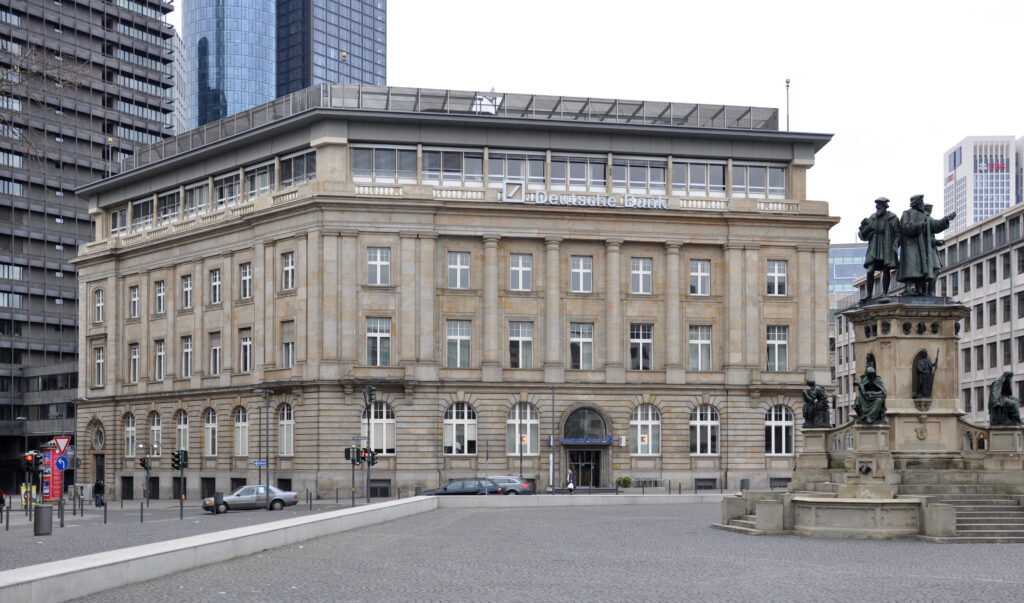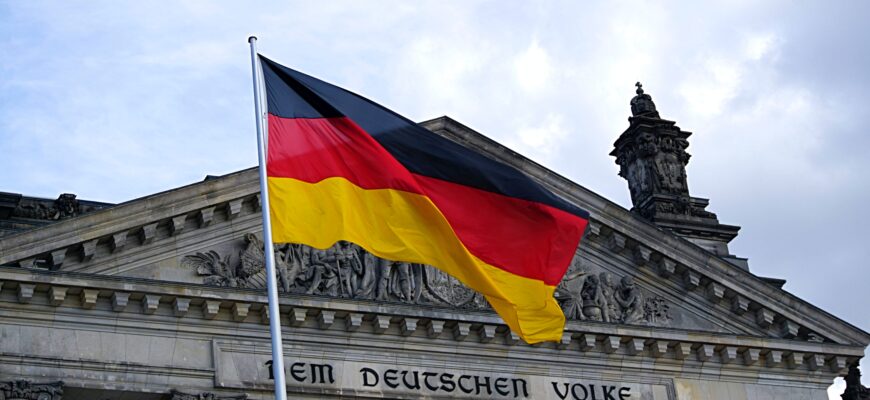The system of financial institutions in Germany includes all credit institutions operating under the Law on Credit Business. A distinctive feature of the German banking system is a high degree of universalization of banking activities.
The monetary system of Germany is one of the most developed in Europe. Germany’s reputation as a leading banking center in the world is due to the excellence of national legislation.
- Two-tier structure in the German monetary system
- Commercial banks, depending on the field of activity, are classified as private universal and specialized financial institutions.
- Financial and industrial groups
- Commercial banks
- The provision of loans for utilities
- Savings banks are among the main non-bank financial institutions.
- Savings banks
- Financial centers
- Credit partnership
Two-tier structure in the German monetary system
At the first level of the monetary system is the Federal Bank of Germany.
At the second level, there are more than 4,000 commercial banks and non-bank credit and financial institutions. Control over their activities is entrusted to the Federal Audit Office, which is subordinate to the Ministry of Finance.
Commercial banks, depending on the field of activity, are classified as private universal and specialized financial institutions.
Universal banks play a special role in the German monetary system. These include large and regional banks.

Gross Banks are commercial banks that are the largest lending institutions in Germany. Their creation began in the 19th century. The Deutsche Bank, the Dresden Bank, and the Commerzbank are the largest of the gross banks. All banks are joint-stock companies, the capital of which is widely dispersed both within the country and abroad. The number of shareholders of each bank is calculated in the range of 200 – 300 thousand German citizens. In terms of capital, large banks are among the most powerful banks in the world. All banks operate in an extensive network of 4000 branches, which covers the whole of Germany.
Financial and industrial groups
Each major bank is headed by a financial and industrial group that emerged as a result of their merger with the country’s industrial concerns. The largest financial and industrial group “Deutschebank” unites the largest concerns of such key sectors of the economy as electrical engineering, electronics, the nuclear industry, and heavy engineering. Deutsche Bank has especially close ties with industrial companies Siemens, Gas, Jenial, Henkel, and others.
The financial group “Dresdnerbank” in terms of economic power is somewhat inferior to the previously aforementioned group. It includes the concerns:
- Krupp
- AEG-Telefunken
- Metallgesellschaft-Degusa
- Grundig
and other enterprises.
The Commerzbank Group is one step lower, in third place in terms of economic strength. The group is based on close business relationships with industrial concerns:
- IG-Farben
- Ganiel
- Verhan
- Thyssen.
Commerzbank includes about 50 different companies from different sectors of the economy.
200 financial institutions belong to regional banks. Their activities are carried out based on organizational and legal forms of joint-stock companies, joint-stock limited liability partnerships, and limited liability companies.
Initially, the activities of regional banks were limited to one region or industry. Today these banks operate throughout Germany and beyond.
Commercial banks
Commercial banks also include branches of foreign banks. The overall level of activity of other countries in the German financial market is quite high. Currently, there are more than 300 foreign credit organizations in Germany from more than 50 countries of the world with a developed branch network.

Specialized commercial banks in Germany are represented by mortgage banks, the Post Bank, and the Cooperative Central Bank.
The group of mortgage banks includes about 30 banks specializing in the provision of utilities and land loans. These banks provide long-term loans to finance housing construction and modernization of residential buildings, for investments in industry and agriculture. Pledge rights to land plots act as guarantees for the loan.
The provision of loans for utilities
Another area of the activity of these institutions is the provision of loans for utilities. These loans are issued by the Federation, states and municipalities, other corporations, and institutions. Two lending institutions of this group specialize as mortgage banks for financing shipbuilding based on medium and long-term loans. These mortgage banks obtain the necessary funds for lending from the sale of mortgages and utility bonds in the capital market.
The Postal Bank began its postal activity in 1990. It was founded by 2 postal savings and 14 post offices of the German Federal Post Office. The bank specializes in the activities of settlement and deposit systems.
Cooperative central banks carry out settlement transactions between individual cooperative credit partnerships. The Deutsche Genossenschaftsbank AG is the main organization of the cooperative banking group. It is a state corporation. Its task is to promote the development of the German cooperative movement. The Deutsche Genossenschaftsbank AG, as a universal commercial bank, operates all over the world, has the right to issue shares, and performs all types of banking operations.

Savings banks are among the main non-bank financial institutions.
Savings banks
In the past, savings banks were limited to collecting savings and lending against real value collateral. Today they have acquired the functions of universal commercial banks. However, the traditional function of savings banks still forms the basis of their business.
Today in Germany there are about 560 savings banks with 20 thousand municipal branches. That is, cities and regions are the owners and guarantors of the safety of funds.
Today, savings banks are the country’s largest group of financial institutions that carry out lending operations throughout Germany. About 60% of Germans have deposits in savings accounts.
Financial centers
All regional savings banks are subordinate to twelve central financial centers. The centers operate with funds from savings banks and carry out lending operations. In parallel with these traditional tasks, financial centers have been increasingly involved in financing large industrial transactions and foreign trade transactions since the 60s. The respective federal states, savings banks, and their regional unions are responsible for the obligations of these financial centers. State control is exercised by the responsible ministers of the land.
Credit partnership
About 3000 cooperative credit associations operate in cities, mainly under the Volksbank name, and in the countryside under the Raiffeisenbank name. In part, we are talking about These are relatively small rural cooperative credit organizations, the number of which has been gradually decreasing in recent years due to their amalgamation.
The idea of financial aid through self-help in Germany originated more than 125 years ago and became the basis for the creation of the cooperative credit sector. Today cooperative credit associations offer a universal range of services. But still, their activities are focused on obtaining perpetual and savings deposits and on issuing short-term and medium-term loans to their members. The volume of long-term loans is constantly increasing.

Previously, the members of this partnership were mainly artisans and farmers. There are now over 11 million members representing the middle class of the population who are employed.
Credit Guarantee Associations are self-help organizations of medium-sized enterprises that emerged in the mid-1950s. Their main task is to provide the necessary financial resources to small and medium-sized enterprises. They provide guarantees to credit associations in the event of losses incurred by industrial and commercial enterprises.
Construction savings banks are financial institutions specializing in housing finance. The main advantage of such institutions is low-interest rates on loans.








